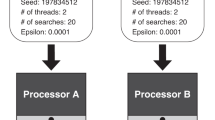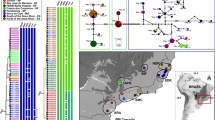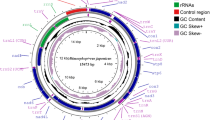Abstract
1) Rates of phenotypic evolution have changed throughout the history of life, producing variation in levels of morphological, functional, and ecological diversity among groups. Testing for the presence of these rate shifts is a key component of evaluating hypotheses about what causes them. General predictions regarding changes in phenotypic diversity as a function of evolutionary history and rates are developed, and tests are derived to evaluate rate changes. Simulations show that these tests are more powerful than existing tests using standardized contrasts. 2) Species delimitation and species tree inference are difficult problems in the case of recent divergences, especially when different loci have different histories. I quantify the difficulty of the problem and introduce a non-parametric method for simultaneously dividing anonymous samples into different species and inferring a species tree, using individual gene trees as input. This heuristic method seeks to both minimize gene tree – species tree discordance and excess population structure within a species. Analyses suggest that the method may provide useful insights for systematists working at the species level with molecular data.3) The phylogeny of Myrmecocystus ants is estimated using nine loci, finding that none of the three subgenera are monophyletic, implying repeated evolution of foraging times and particular morphologies. A new partitioned likelihood program, MrFisher, is created from MrBayes to aid analysis of multilocus datasets without assuming priors. Simulations show that using a partitioned likelihood approach in the presence of rate heterogeneity and missing data, as is common in supermatrix analyses, can recover correct branch lengths where non-partitioned likelihood gives predictably biased estimates of branch lengths but the correct topology.4) Evolution of foraging time and coevolution of behavior and morphology in Myrmecocystus ants is examined. New models for reconstructing discrete states along branches of a tree and for examining continuous trait evolution and coevolution with discrete traits are developed and implemented. Foraging transitions between diurnal and nocturnal foraging evidently go through crepuscular intermediates. There is some evidence for increased rates of morphological character evolution associated with changes in foraging regime, but little evidence for particular optimum values for morphological traits associated with foraging.
Similar content being viewed by others
Article PDF
Author information
Authors and Affiliations
Corresponding author
Rights and permissions
About this article
Cite this article
O’Meara, B. Using Trees: Myrmecocystus Phylogeny and Character Evolution and New Methods for Investigating Trait Evolution and Species Delimitation (PhD Dissertation). Nat Prec (2008). https://doi.org/10.1038/npre.2008.2261.1
Received:
Accepted:
Published:
DOI: https://doi.org/10.1038/npre.2008.2261.1



